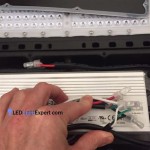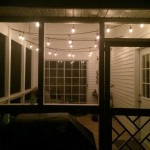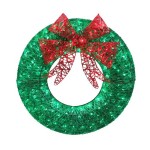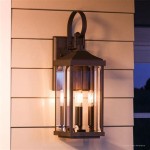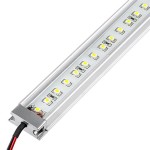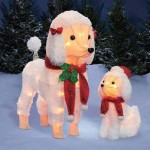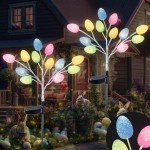Can You Hang An Outdoor Light Inside? Considerations and Safety
The question of whether an outdoor light fixture can be used indoors is a common one, often arising during home renovations, repurposing projects, or when budgetary constraints necessitate flexibility. While seemingly straightforward, this inquiry necessitates a nuanced understanding of the design and construction differences between indoor and outdoor light fixtures, as well as a thorough consideration of safety regulations and potential performance implications. A simple "yes" or "no" answer is insufficient; rather, a careful evaluation of the specific fixture and the intended indoor application is required.
The primary divergence between indoor and outdoor lighting lies in their design adaptation to different environmental conditions. Outdoor fixtures are specifically engineered to withstand exposure to the elements, including moisture, extreme temperatures, and physical impact. Indoor fixtures, conversely, are designed for controlled environments, prioritizing aesthetics, focused illumination, and energy efficiency within a sheltered space. This fundamental difference in design philosophy necessitates a cautious approach when considering cross-application.
Understanding the Design Differences
Outdoor light fixtures typically feature robust construction, utilizing durable materials such as cast aluminum, stainless steel, or weather-resistant plastics. These materials are chosen for their ability to resist corrosion, rust, and degradation caused by prolonged exposure to rain, snow, sunlight, and temperature fluctuations. Indoor fixtures, on the other hand, often employ lighter and more decorative materials like glass, brass, or polished metals, prioritizing aesthetic appeal over rugged durability. The enclosure for an outdoor light is also typically sealed more effectively to prevent water ingress, often incorporating gaskets and specialized seals around electrical connections and bulb housings.
Electrical components within outdoor fixtures are also designed for increased protection. Wiring is often thicker and insulated to prevent damage from moisture and temperature changes. Ballasts and transformers, if present, are often encased in waterproof or water-resistant housings. Indoor fixtures may utilize thinner wiring and less robust insulation as they are not exposed to the same level of environmental stress. Consequently, using an indoor fixture outdoors could result in electrical failures, corrosion, and potentially hazardous situations.
Furthermore, the mounting hardware for outdoor fixtures is typically more substantial, designed to withstand wind loads and impacts from debris. Indoor fixtures generally use lighter-duty mounting systems that are adequate for supporting the fixture's weight within a stable environment. Attempting to use an indoor fixture outdoors could lead to structural failure and potential hazards, especially in windy or exposed locations.
Safety and Electrical Considerations
Safety is paramount when dealing with electrical installations, and this is especially crucial when considering using an outdoor light fixture indoors. One of the key safety aspects to consider is proper grounding. Outdoor fixtures are often designed with enhanced grounding capabilities to protect against electrical shocks in wet environments. Indoor wiring systems are also grounded, but the grounding requirements may differ depending on local electrical codes. It is essential to ensure that the outdoor fixture's grounding system is compatible with the indoor wiring system to prevent potential hazards.
Another crucial consideration is the wattage rating of the fixture and the circuit to which it will be connected. Outdoor fixtures may accommodate higher wattage bulbs than typical indoor fixtures, as brighter illumination is often required for outdoor spaces. Overloading an indoor circuit with a high-wattage outdoor fixture can lead to overheating, blown fuses or breakers, and potentially even fires. It is essential to check the wattage rating of the fixture and ensure that it is compatible with the circuit to which it will be connected. Consult with a qualified electrician if you are unsure about the circuit's capacity.
Furthermore, the presence of a Ground Fault Circuit Interrupter (GFCI) outlet is an important safety factor. GFCIs are designed to detect imbalances in electrical current and quickly shut off power to prevent electrical shocks. While typically associated with wet locations like bathrooms and kitchens, GFCIs provide an added layer of safety and may be beneficial in any location where electrical hazards are present. While not strictly required when using an outdoor fixture indoors, installing a GFCI outlet can provide extra protection, especially if there is a possibility of moisture exposure.
Local electrical codes and regulations provide specific guidelines for electrical installations, including lighting fixtures. These codes are designed to ensure the safety of occupants and prevent electrical hazards. It is crucial to familiarize oneself with local codes before attempting any electrical work, including installing an outdoor light fixture indoors. Ignoring local codes can result in fines, failed inspections, and potentially dangerous situations. Consulting with a qualified electrician is recommended to ensure compliance with all applicable regulations.
Potential Performance and Aesthetic Issues
Beyond safety considerations, the performance and aesthetic characteristics of an outdoor light fixture may not be suitable for indoor use. The light output of an outdoor fixture is typically designed for illuminating larger areas and may be excessively bright for indoor spaces. This can lead to glare, discomfort, and an inefficient use of energy. Indoor lighting typically aims for softer, more diffused illumination to create a comfortable and inviting atmosphere.
The color temperature of the light emitted by an outdoor fixture may also be different from that of typical indoor lighting. Outdoor fixtures often use cooler color temperatures (e.g., bluish-white light) to provide better visibility at night. Indoor lighting, on the other hand, typically uses warmer color temperatures (e.g., yellowish-white light) to create a more relaxing and inviting ambiance. Using a cooler color temperature indoors can feel sterile and unnatural.
The aesthetic design of an outdoor fixture may also clash with the overall decor of an indoor space. Outdoor fixtures often have a more utilitarian or industrial appearance, while indoor fixtures tend to be more decorative and refined. Using an outdoor fixture indoors could disrupt the aesthetic harmony of the space and create an undesirable visual effect. Carefully consider the fixture's design and ensure that it complements the existing decor before installation.
Finally, the size and scale of an outdoor fixture may be inappropriate for an indoor space. Outdoor fixtures are often larger and more imposing than indoor fixtures, as they are designed to be visible from a distance. Using an oversized outdoor fixture indoors can overwhelm the space and create a sense of imbalance. Carefully consider the dimensions of the fixture and ensure that it is appropriately sized for the intended indoor location.
In conclusion, while it may be technically possible to hang an outdoor light fixture inside, a thorough assessment of safety, electrical compatibility, performance, and aesthetics is crucial. It is generally advisable to use fixtures specifically designed for indoor use to ensure optimal safety, performance, and visual appeal. When in doubt, consulting with a qualified electrician is highly recommended to ensure compliance with local codes and prevent potential hazards. Thorough research and careful planning are essential for a successful and safe lighting installation.

How To Hang Outdoor String Lights Ideas True Value

How To Hang Patio Lights Juggling Act Mama

How To Hang Outdoor String Lights The Ultimate Guide Jessica Welling Interiors

How To Hang Patio Lights Yard Envy

How To Hang Outdoor String Lights From Deck Tree More

5 Easy Tips For Hanging Outdoor String Lights From A Pergola

Diy Outdoor Patio String Lights Landscape Lighting Guru

How To Hang String Lights Outdoors

The Easiest Diy Outdoor String Light Poles Tutorial Jessica Welling Interiors

Set The Mood With Outdoor Lighting
